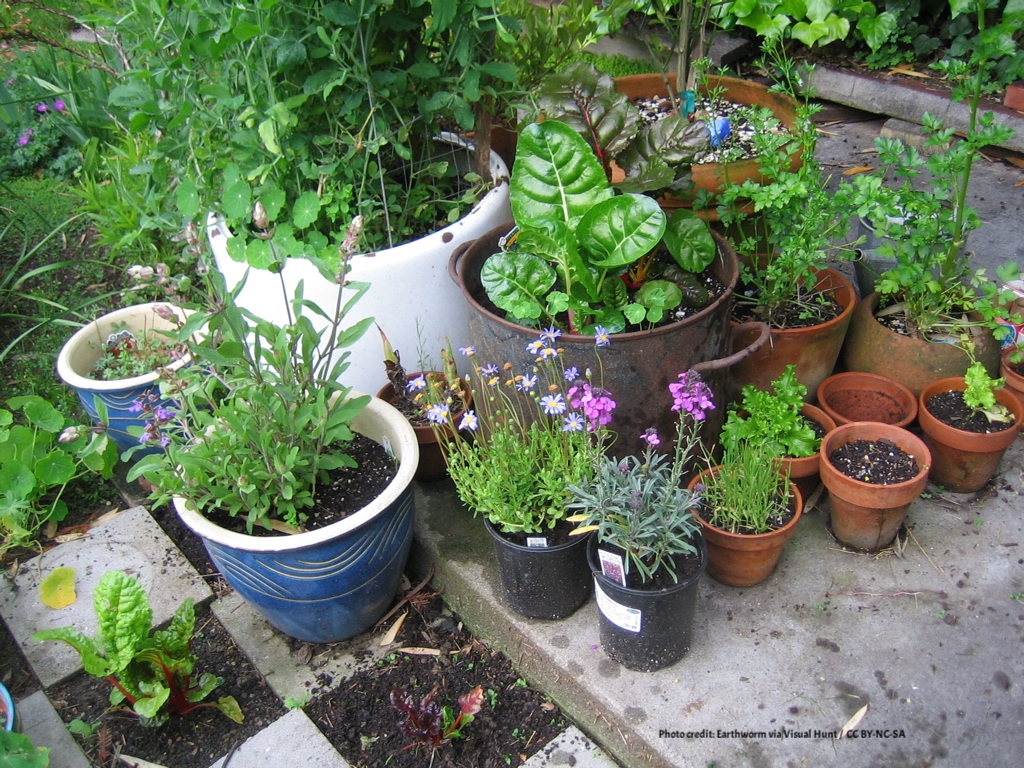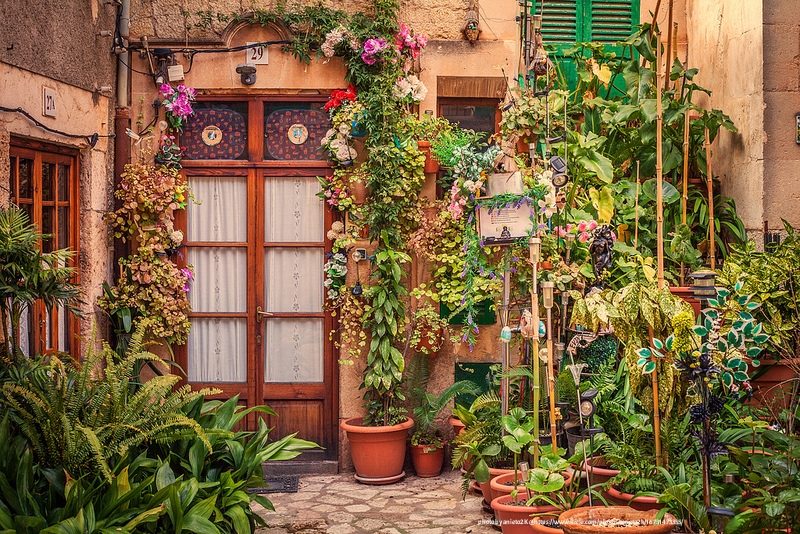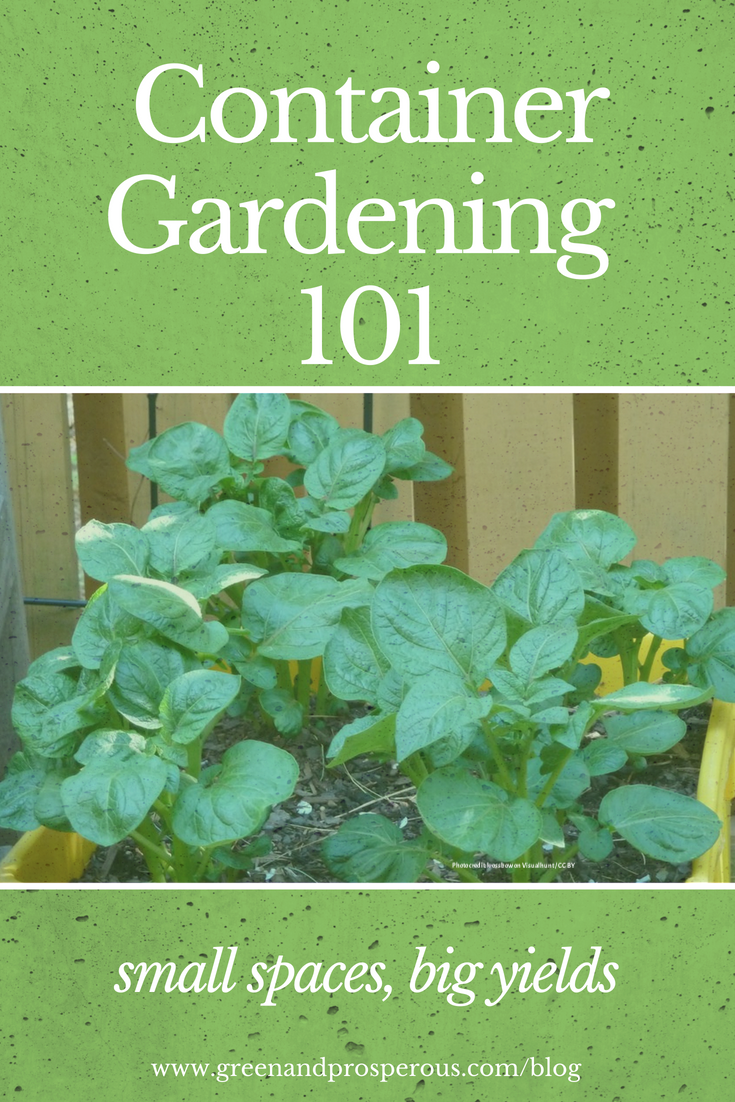Container Gardening 101: Small Spaces, Big Yields
/Container gardening has many advantages
This summer I’ve been blogging about container gardening quite a bit (that is, when I managed to blog! We’re undergoing some big changes here at Green and Prosperous that have taken up most of my blogging time, including developing an online course on container gardening for beginners and experienced growers alike). This post continues our summer theme, with a focus on how you can grow more in less space.
If you’ve been reading the blog lately, you’ll know that there are a lot of advantages that container gardening presents over conventional in-ground gardening. Some of these advantages will be appreciated by gardeners with limited experience (or no experience at all), gardeners with back or neck problems, gardeners who have backyard visitors like birds, squirrels, and deer helping themselves to the harvest, and gardeners who just don’t have much space to work with. If you fall into the first, second, or fourth category, this post has information that you’ll find useful and that will help you to grow more with less effort and less square footage.
When I first started growing some of my own food over 21 years ago, I used to think containers necessarily produced smaller plants and yields than in-ground planting, but that’s not necessarily the case. There are many factors that have an impact on how much of a harvest each of your plants can produce, and how big the products of that harvest can grow. Some of these factors include the variety of plant, its aptitude for verticality, and its capacity for compact growth.
Purchase high-yielding varieties of your favorite crops
Some plants have been engineered for big yields. Yes, these include genetically modified varieties, but not all kinds of genetic modifications are the same. Farmers have been modifying their plants for millennia in order to produce desirable traits. For example, harvesting seeds from the biggest, strongest, fastest-growing plants among you stock and only planting those seeds each year produces plants that are bigger, stronger, and faster-growing than the stock you began with the first time you grew that crop. However, the current concerns with generic modifications (concerns I share) don’t usually include conventional breeding techniques. Instead, the anti-GMO movement tends to cite practices like transgenic modification, which means using recombinant DNA technology to introduce a gene that does not naturally occur in a plant or to modify its existing genes. Although many scientists insist that such profound genetic modifications produce bigger crop yields, have the potential to address global hunger crises, and do not have any harmful effects on the environment or on human health, activists and many ordinary consumers disagree. One of the disadvantages of genetic modifications is the potential for introducing new, unforeseen mutations in the genes of plants. These mutations could cause all kinds of problems, from greater resistance to pesticides to a vulnerability to entirely new diseases that we’re not capable of dealing with.
If you want to find high-yield crops to grow in your garden, look for organic varieties, such as those available through Gardener’s Supply Company (US), Unwins (UK) or Seed Matters (Canada). Growing from seed also means you will have a wider variety of these kinds of plants to choose from that what you typically find in your local nursery.
Maximize space by planting up
Small spaces can be maximized for yield if you think outside the dimensions of your container. Choose varieties of plants that can be trained to grow upward, like tomatoes, green beans, sweet bell peppers, squash, sweet potato, and even small varieties of watermelon. You only need a few tools to get your plants to grow vertically: plants can be tied to a wooden, bamboo, or plastic stake or pole with garden Velcro, clips, or even twine (tie it loosely and in a bow for easy adjustment so it doesn’t cut into the stem of the plant as it grows). Adjust the plant as it grows and trim the sides if it becomes too bushy or produces many shoots close to the bottom of the plant. You can purchase connectors to make a tomato trellis cheaply and easily, or if you’re handy, use some old wood or narrow PVC pipe and connectors, which can be cur to size using a hand saw (preferably a hacksaw).
Be compact in your planting
Finally, choose plants that grow well in compact areas, like potatos. You can grow lots of potatos in a 5-gallon (19-liter) bucket by using a simple technique: start out with just a few inches of soil and when the plants start to grow, begin piling soil onto the plants as the season progresses. This forces the potatos to speed up their root growth, thereby producing more potatos. Carrots can also be grown in buckets, with an average of 5 carrots per gallon (approx. 4 liters) or 25 carrots per 5-gallon/19-liter bucket.
Next week’s post will look more closely at specific growing techniques that can increase the size of your typical harvest by 3-fold, so please come back and visit the blog!
Want to learn more about growing your own food, even if you don’t have any (or much) experience?
Green and Prosperous is developing a new course on late summer through late fall container gardening, which will be launching in a couple of weeks! Sign up to the mailing list to get notified about course updates and for access to members-only discount pricing. In the meantime, by signing up, you’ll also be able to access our free resource library, which contains planting guides and recipes for all those delicious dishes you’ll be able to make with your homegrown veggies!
Like this? Please pin!








































